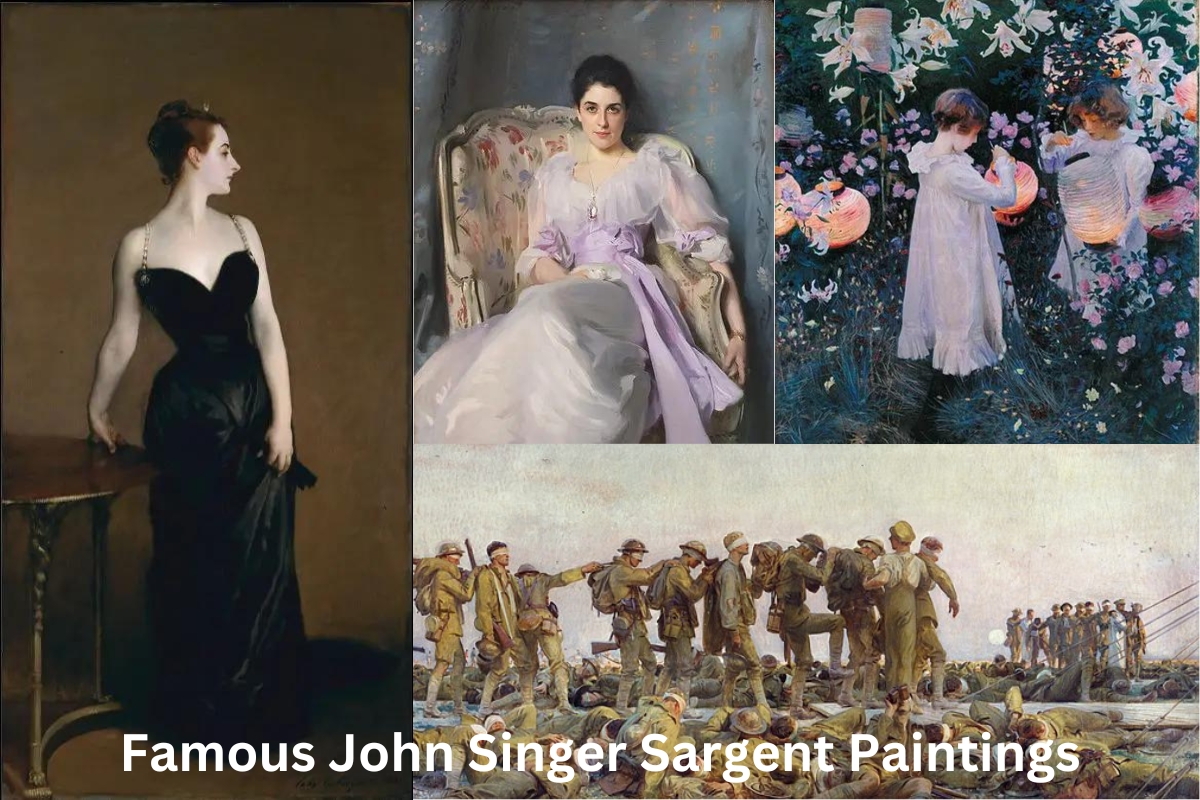John Singer Sargent was an American artist who lived and worked in Europe from January 12, 1856, until his death on April 14, 1925. His portraits of wealthy Edwardian subjects earned him the title “eminent portrait painter of his generation.”
About 900 oil paintings, over 2,000 watercolors, and innumerable sketches and charcoal drawings are among his many works of art.
His works showcase his extensive travels to exotic locales such as Venice, the Tyrol, Corfu, Spain, the Middle East, Montana, Maine, and Florida.
Early on, Sargent’s brushwork in particular displays a great technical skill that would subsequently garner both praise and condemnation for its seeming shallowness.
His formal portrait commissions adhered to the grand style, while his more casual studies and landscapes showed an understanding of Impressionism.
In his final years, Sargent felt restrained by traditional portraiture and instead focused on murals and painting in the open air. Societal artists like Sargent were mostly overlooked by art historians until the 20th century.
Below are some of Sargent’s most famous artworks.
John Singer Sargent Famous Paintings
1. Portrait of Madame X
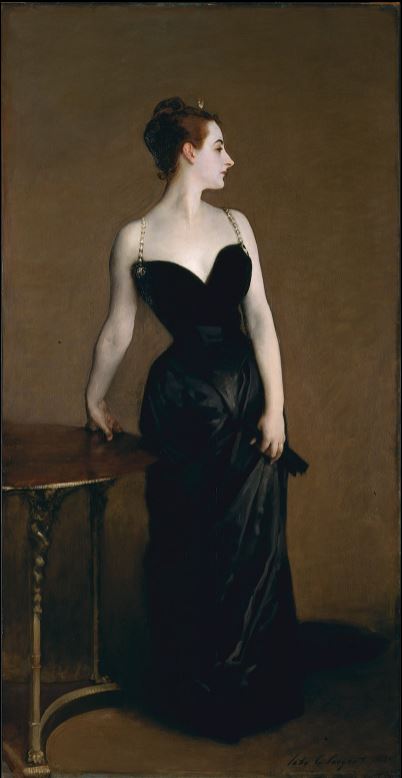
Artists of the mid-1800’s were slowly being lured towards various types of Impressionism or other styles of painting, but a few well-known painters were still focused on expressing their works in vivid realism.
John Singer Sargent was a master at painting the feminine body in a way that was both hyper-realistic and startling in its realism.
He developed a series of works that concentrated on the female body in various stances and forms of clothes, but one of the best known is known as Madame X.
The wife of a wealthy French banker is seen here in a stunning black gown; the painting dates back to 1884.
The dress the woman is wearing in this painting was considered overly exposing at the time it was displayed in the Paris Salon, and many critics declared the work inappropriate for public viewing.
However, it is still acknowledged as one of the timeless masterpieces that is among the most famous paintings of women ever done.
2. Carnation, Lily, Lily, Rose
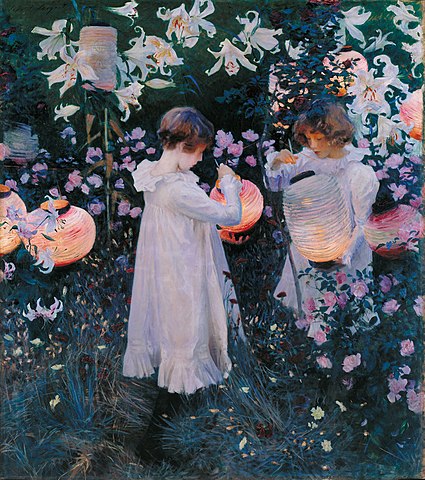
In the picture, two young children dressed in all white are seen setting off paper lanterns as dusk falls in a garden filled with pink roses, yellow carnations, and towering white lilies.
There is no horizon or other horizontal line in the painting to give the illusion of depth, and the greenery that does appear dominates the composition.
It’s as if the onlooker is looking down on the kids from eye level. The two girls in the artwork are the daughters of the painting’s artist, Frederick Barnard.
Sargent spent the summer of 1885 in England, away from the controversy surrounding his 1884 painting Portrait of Madame X, and this piece is set in an English garden at Farnham House in Broadway, Cotswolds.
Robert Louis Stevenson, author of A Child’s Garden of Verses, stayed there, and his words served as inspiration for Sargent.
3. El Jaleo
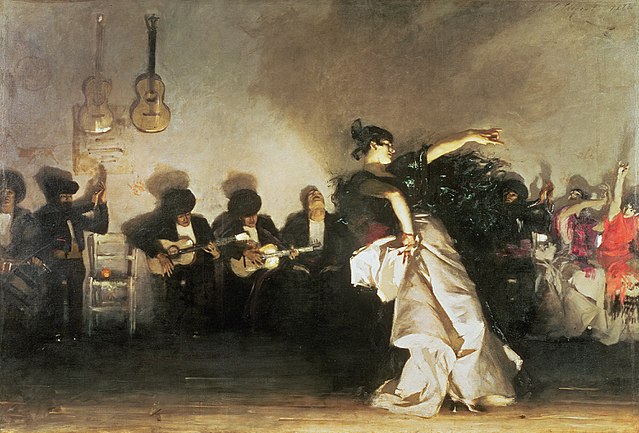
An extremely large painting by Sargent titled “El Jaleo” that depicts a Spanish gypsy dancer performing to live music. The Isabella Stewart Gardner Museum in Boston is home to this painting.
The Spanish Dance, a smaller oil painting by Sargent, was also influenced by his 1879 five-month trip across Spain and North Africa (Hispanic Society of America).
Similar dramatic light effects, exotic models, and muted color palettes can be seen in a series of paintings that Sargent painted on a subsequent trip to Venice, with which this work shares both chronology and conceptual similarities.
Inspired by the colorful costumes and grand stage production of gypsy dance, the artist traveled to Paris to begin work on a monumental painting modeled like a performance space.
El Jaleo can imply either “a commotion” (jaleo) or “jaleo de jerez” (a specific type of dancing).
4. Gassed
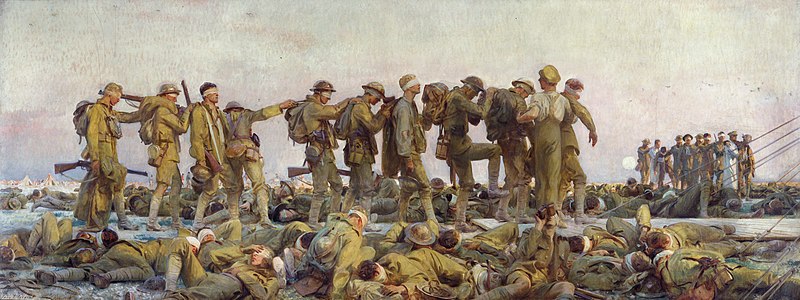
This massive oil painting by John Singer Sargent, titled Gassed, was created in March of 1919. A queue of wounded troops are making their way to a dressing station following a mustard gas attack in World War I.
In July of 1918, Sargent went to the Western Front at the request of the British War Memorials Committee, where he spent time with the Guards Division at Arras and the American Expeditionary Forces near Ypres.
The Royal Academy of Arts named it that year’s best painting when it was completed in March 1919. The Imperial War Museum is currently housing it.
It first came to the United States in 1999 for a series of retrospective shows, and then again in 2016–2018 for shows honoring the centennial of the First World War.
5. Lady Agnew of Lochnaw
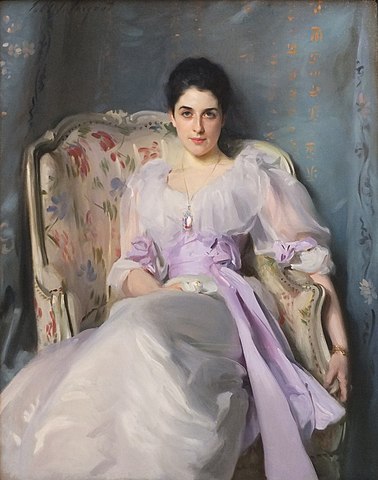
This oil on canvas painting depicts Gertrude Agnew, the wife of Sir Andrew Agnew, 9th Baronet. In 1892, the commission went out to John Singer Sargent, and he completed the piece the following year.
The Scottish National Gallery in Edinburgh, Scotland, is the proud custodian of this 127 101 cm masterpiece (50.0 39.8 in). It was given to the museum by the Cowan Smith Bequest Fund in 1925.
Art historian Richard Ormond notes that the back of Lady Agnew’s 18th-century French Bergère is used to create “curving, supporting space to constrain the body, providing a certain, languid grace.”
Sargent pictured her in a three-quarter view, wearing a white gown with a silk mauve belt to accentuate her waist. The blue Chinese silk covers the wall behind her.
She looks deeply into the photo, as if she were having a “intimate chat” with the people who are also viewing it.
6. The Daughters of Edward Darley Boit
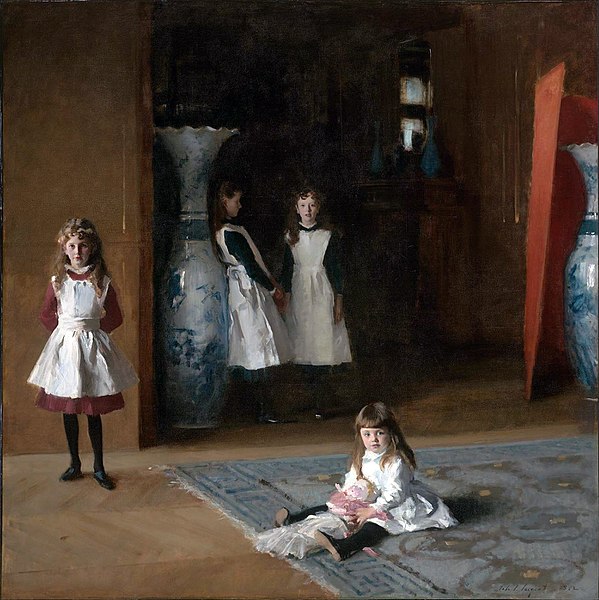
Originally titled Portraits d’enfants, John Singer Sargent’s The Daughters of Edward Darley Boit is a beautiful work of art. Edward Darley Boit’s four daughters are shown in this painting of their living room at the family’s Paris apartment.
The Museum of Fine Arts in Boston has the painting on display in their new Art of the Americas Wing.
The heirs of the Boit family generously donated the two tall blue and white Japanese vases seen in the painting.
It is unclear if Boit commissioned The Daughters of Edward Darley Boit or if Sargent suggested the idea.
Set in what is considered to be the entrance of Boit’s Paris apartment, its dark interior area is reminiscent of ones Sargent had previously painted in Venice.
Both the uneven distribution of focus among the characters and the square format of the canvas were out of the ordinary for a group portrait. Typically, subjects in such a setting would be given equal weight in the composition.
7. Claude Monet Painting by the Edge of a Wood
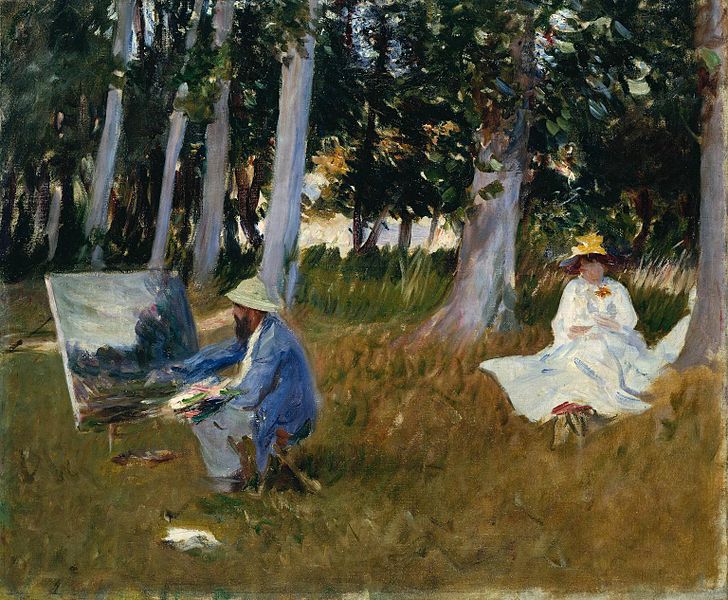
After meeting for the first time in 1876, Sargent and Monet became good friends. They painted together in Giverny, not far from Paris, most likely in 1885.
Sargent adored Monet’s outdoor painting sessions, therefore he mimicked some of Monet’s subjects and techniques in this and other sketches.
Sargent is known for humanizing even the most impersonal subjects, and his depiction of Monet at work and his wife’s patience as he paints is no exception.
Sargent moved to London in 1885 and was at first considered avant-garde, but he went on to become the most celebrated portraitist of London’s elite.
Monet is depicted in this image working on an outdoor landscape at his easel. The fact that it depicts the French artist doing what he advocated—painting straight from nature—has given this portrait historical significance in the study of Impressionism.
8. The Fountain, Villa Torlonia, Frascati, Italy
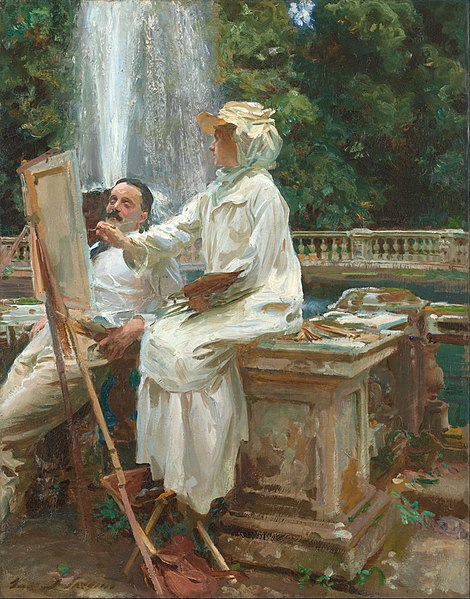
Sargent’s life changed dramatically when, in 1907, he abandoned his established career as a portraitist in favor of painting en plein air.
By fusing landscape and portraiture into a composition that celebrates color, surface, and the transitory effects of light and movement, this bold and energetic painting captures that moment of transformation well.
Wilfrid Emmet and Jane Emmet de Glehn are fellow artists and regular travel companions of Sargent’s.
Despite the impression of spontaneity conveyed by The Fountain, Sargent was regularly sidelined by rain as he painted. Since he needed his buddies to pose for multiple shots, he spread its completion out across several days.
9. Le verre de porto (A Dinner Table at Night)
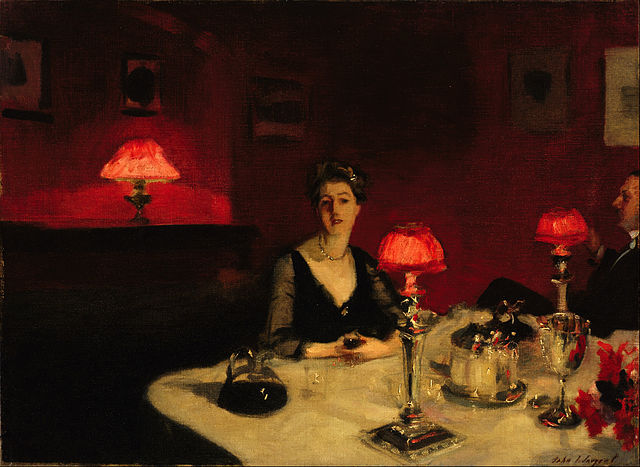
Sargent painted a full-length portrait of Edith Vickers in Sussex in 1884.
This sketch of Edith and her husband Albert in their dining room is one of many casual pictures he made during his time in the country. It’s meant to look natural, as like it happened by chance instead of being carefully crafted.
Sagrent’s piece combines the Impressionist style with the casual portraiture of a conversation piece.
Mrs. Vickers, who occupies the painting’s focal point, stares out at the viewer intently as she rests her hand on a glass of claret and Mr. Vickers, who crosses his legs and smokes an after-dinner cigar, gives the scenario an air of relaxed informality.
10. Portrait of Theodore Roosevelt
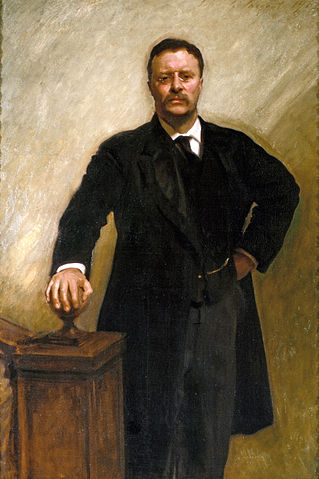
Sargent painted this portrait of Theodore Roosevelt in 1903. He was commissioned to paint Roosevelt’s portrait by architect Charles McKim, who was in charge of extensive renovations to the White House at the time.
In trying to find a well-lit spot to paint, Roosevelt’s patience was put to the strain. Sargent acknowledged the lack of available floor area on the primary floor. When they reached the top of the stairwell, Roosevelt told Sargent that he didn’t think the artist had grasped his intentions.
According to Sargent, Roosevelt clearly did not know how to strike a position for a photograph. When Roosevelt reached the landing, he turned around, put his palm on the newel, and said, “Don’t I!” Sargent recognized an opening and gave the President strict orders not to change his position: this would be the sittings’ permanent setting.
The president was delighted with the final work, despite the Sargent’s later remark that Roosevelt would only sit for very short periods of time.

